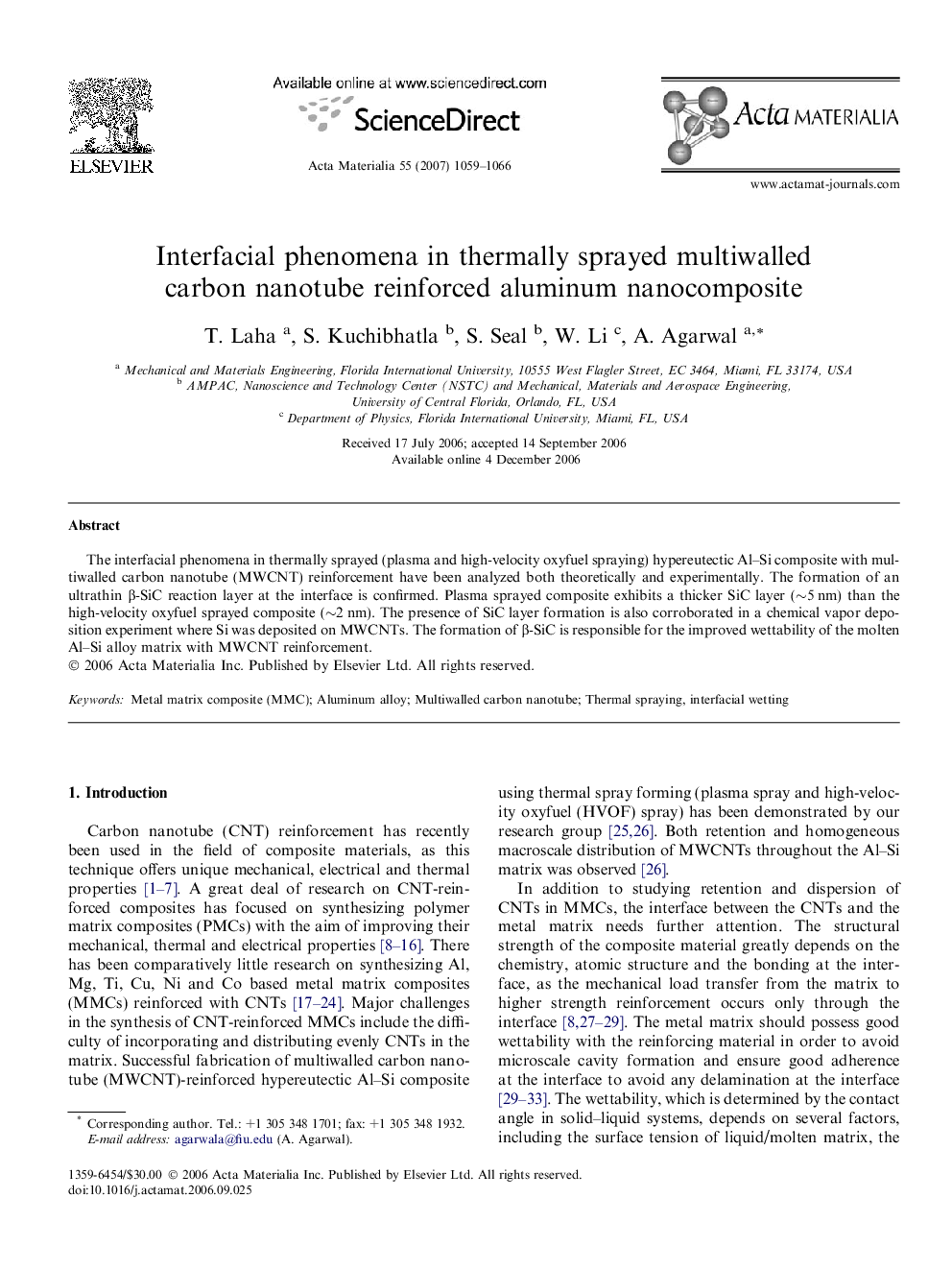| Article ID | Journal | Published Year | Pages | File Type |
|---|---|---|---|---|
| 10620890 | Acta Materialia | 2007 | 8 Pages |
Abstract
The interfacial phenomena in thermally sprayed (plasma and high-velocity oxyfuel spraying) hypereutectic Al-Si composite with multiwalled carbon nanotube (MWCNT) reinforcement have been analyzed both theoretically and experimentally. The formation of an ultrathin β-SiC reaction layer at the interface is confirmed. Plasma sprayed composite exhibits a thicker SiC layer (â¼5 nm) than the high-velocity oxyfuel sprayed composite (â¼2 nm). The presence of SiC layer formation is also corroborated in a chemical vapor deposition experiment where Si was deposited on MWCNTs. The formation of β-SiC is responsible for the improved wettability of the molten Al-Si alloy matrix with MWCNT reinforcement.
Related Topics
Physical Sciences and Engineering
Materials Science
Ceramics and Composites
Authors
T. Laha, S. Kuchibhatla, S. Seal, W. Li, A. Agarwal,
